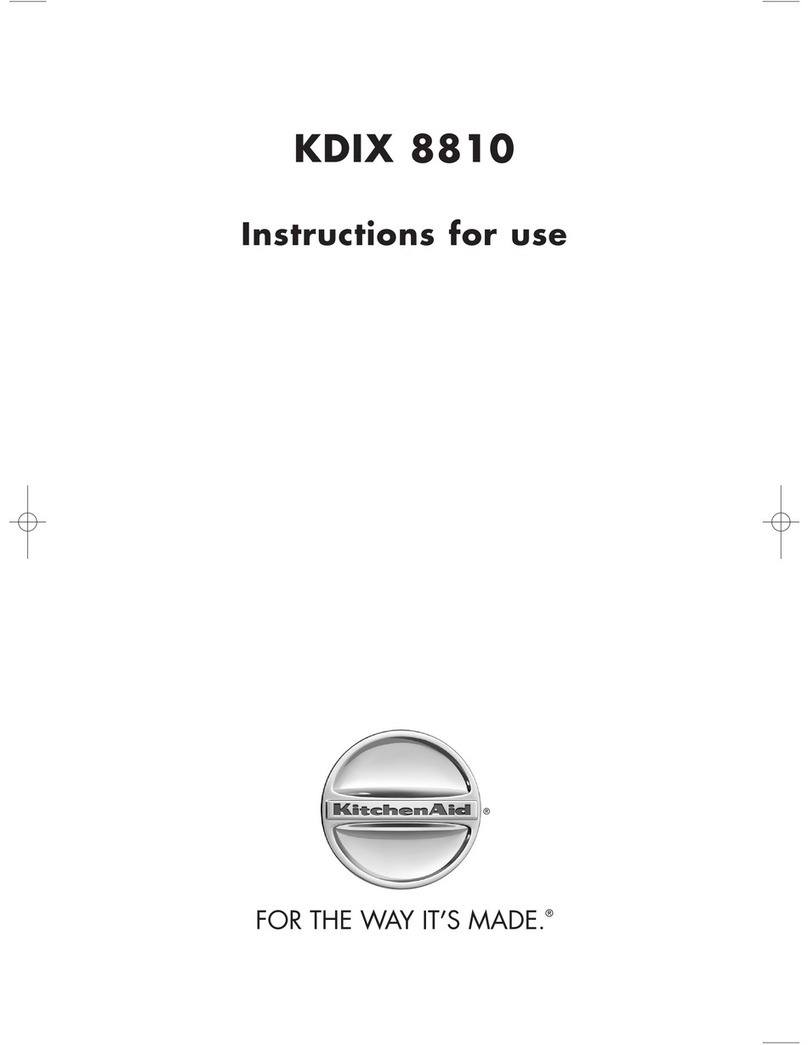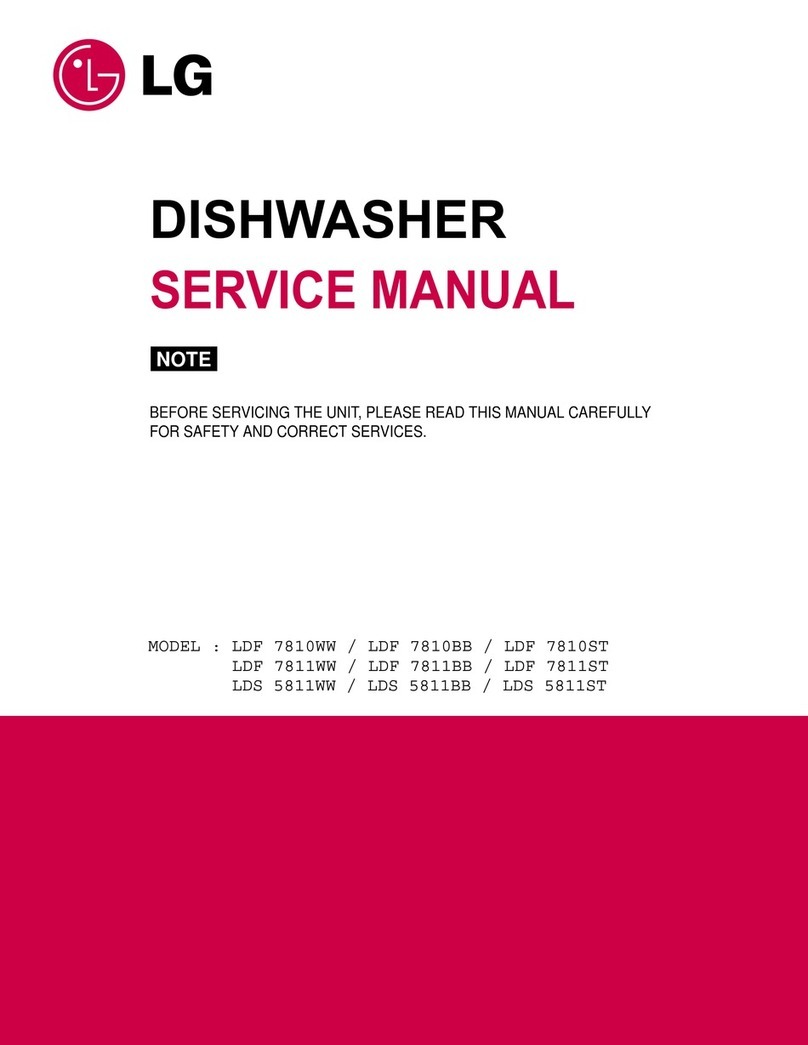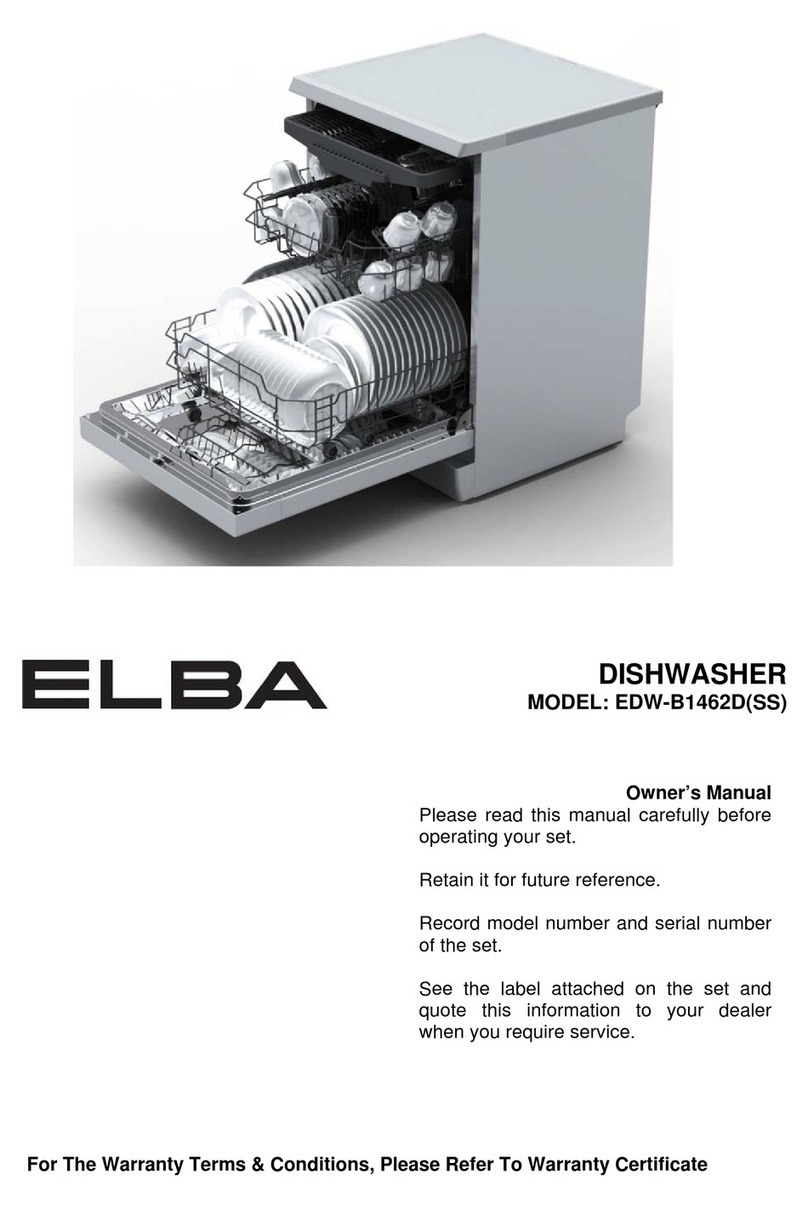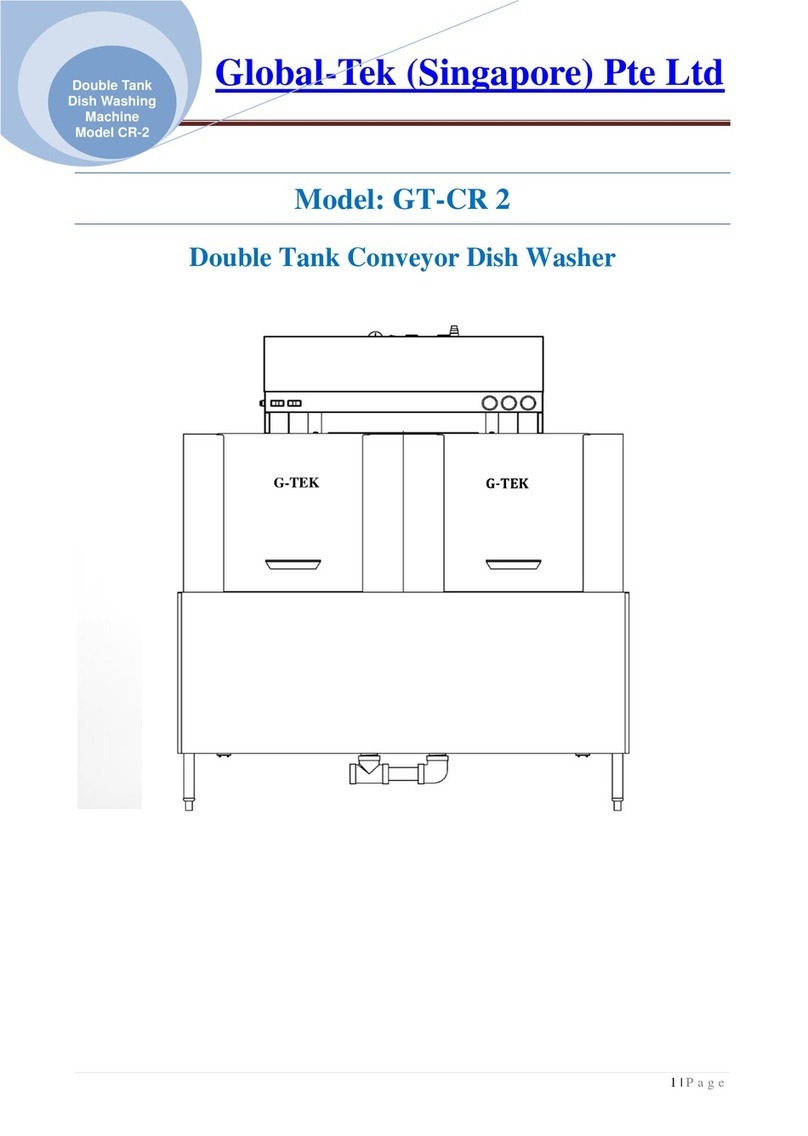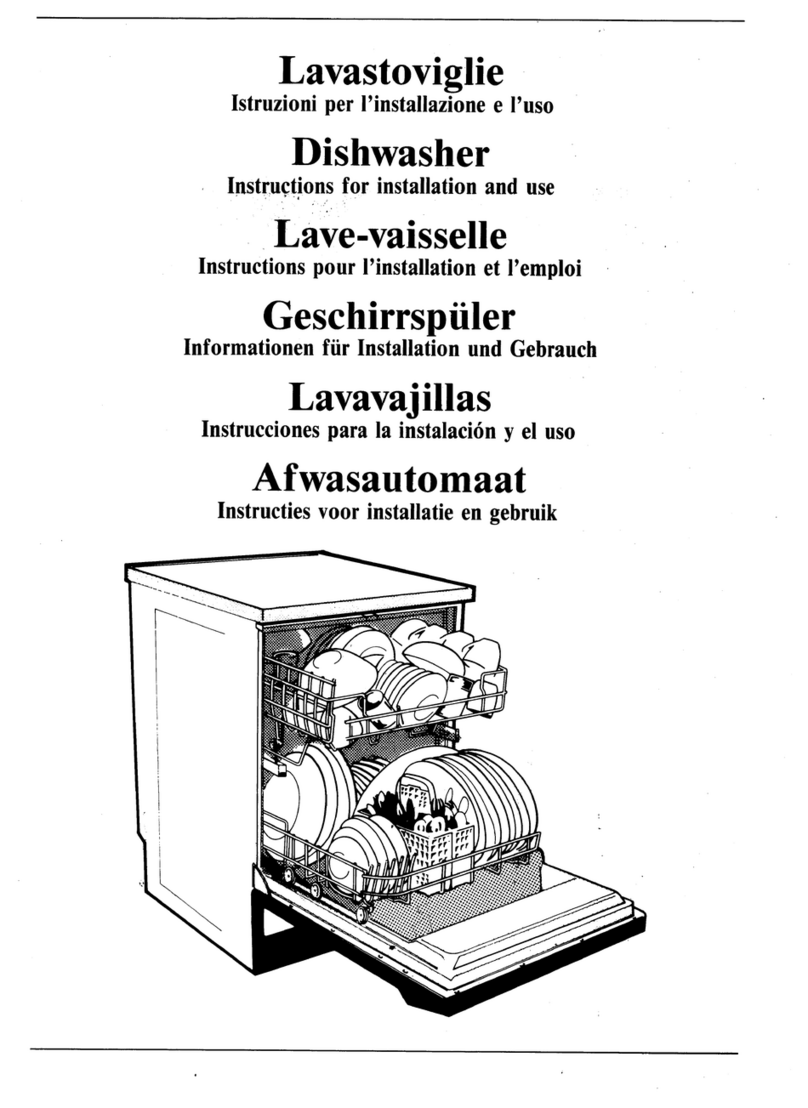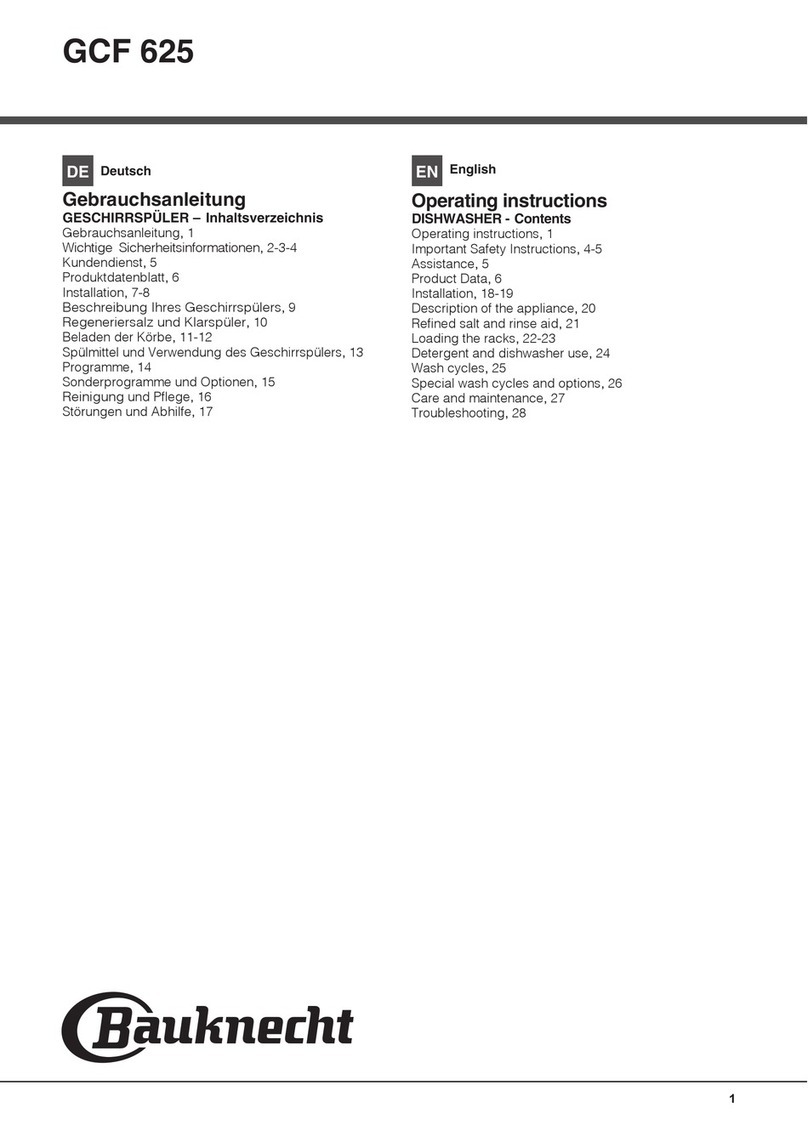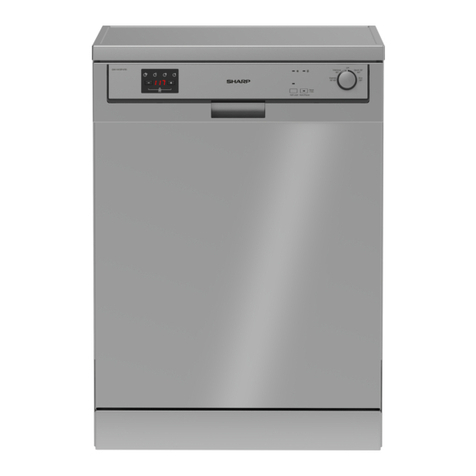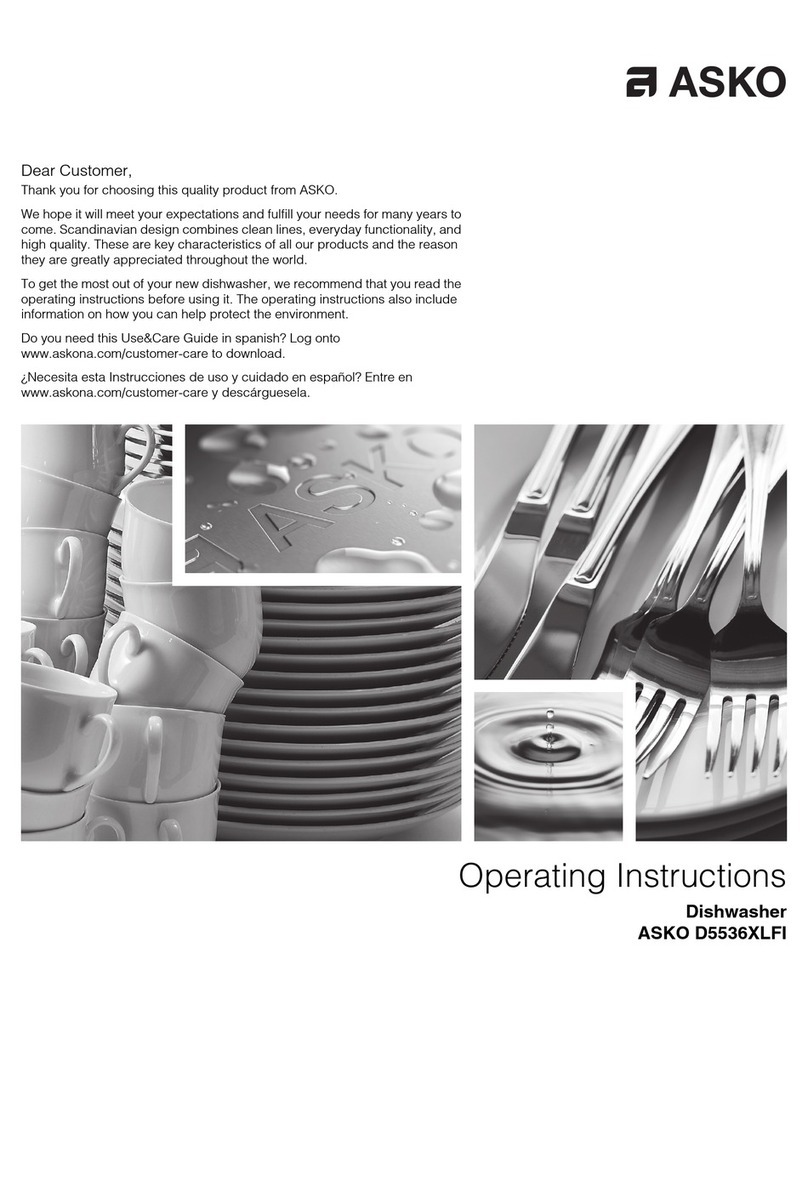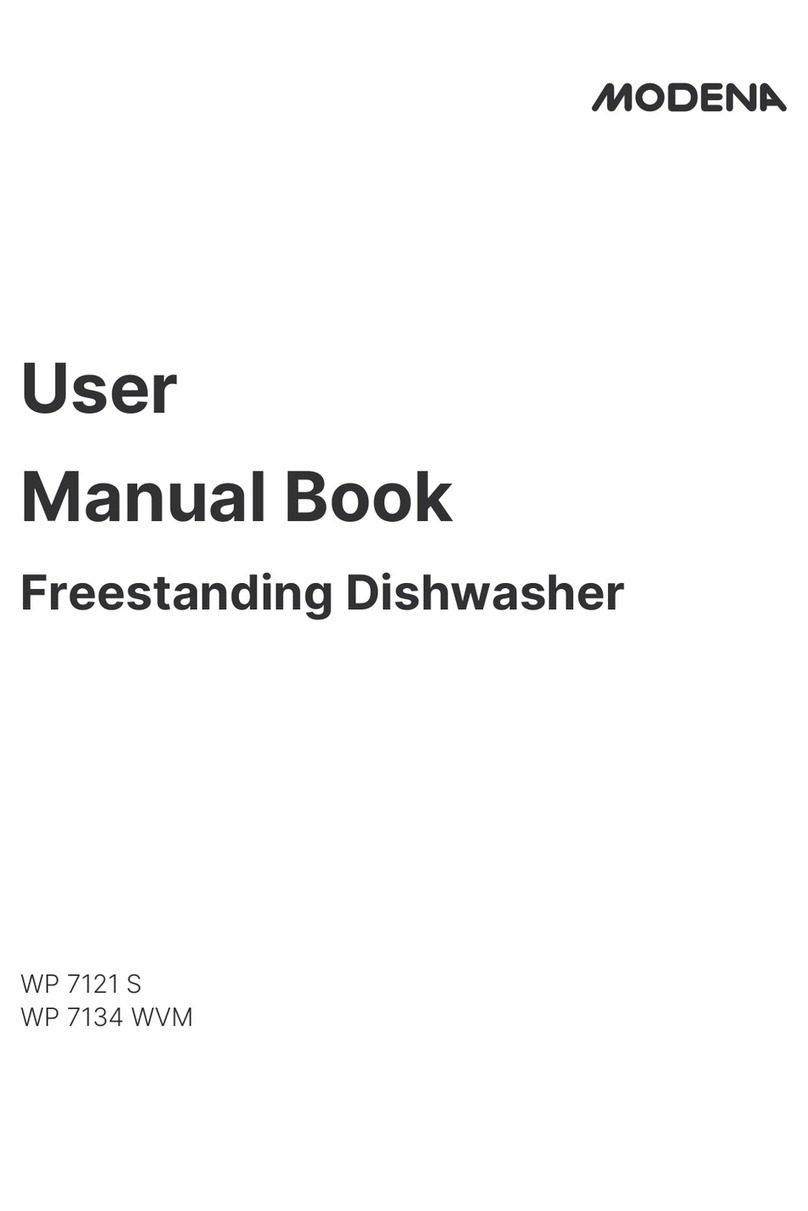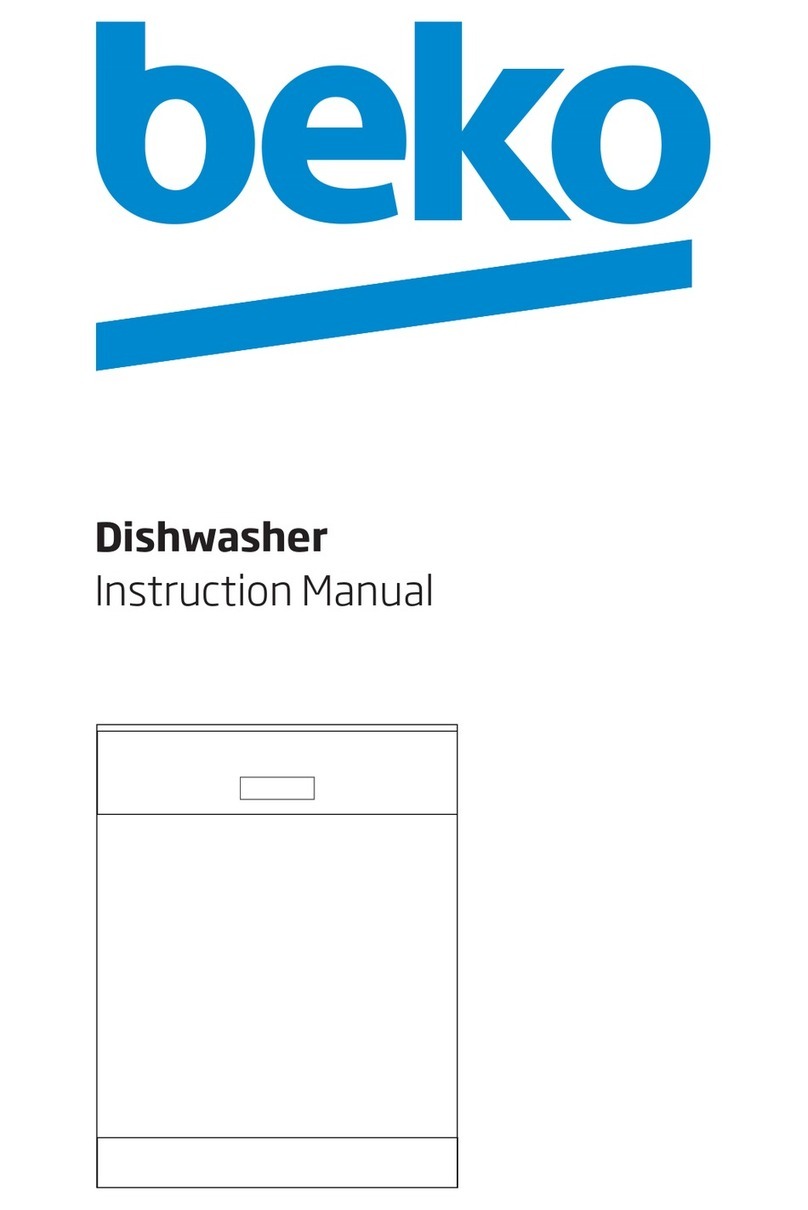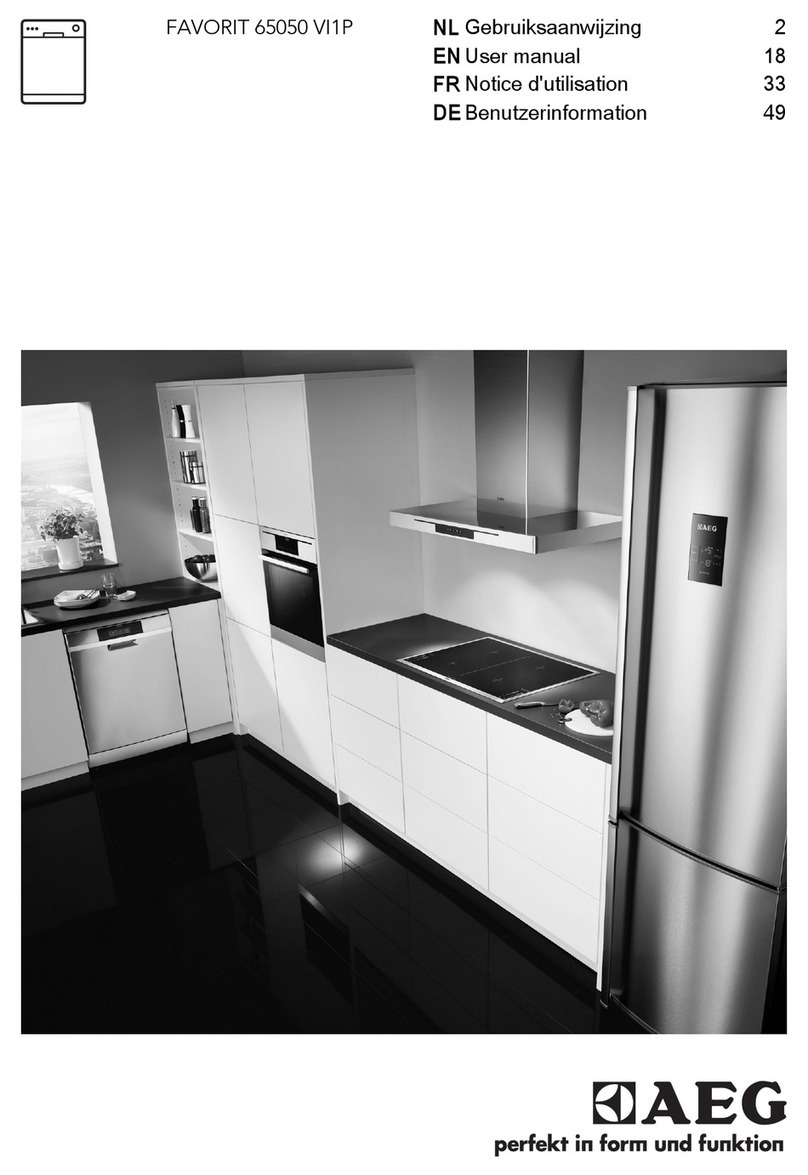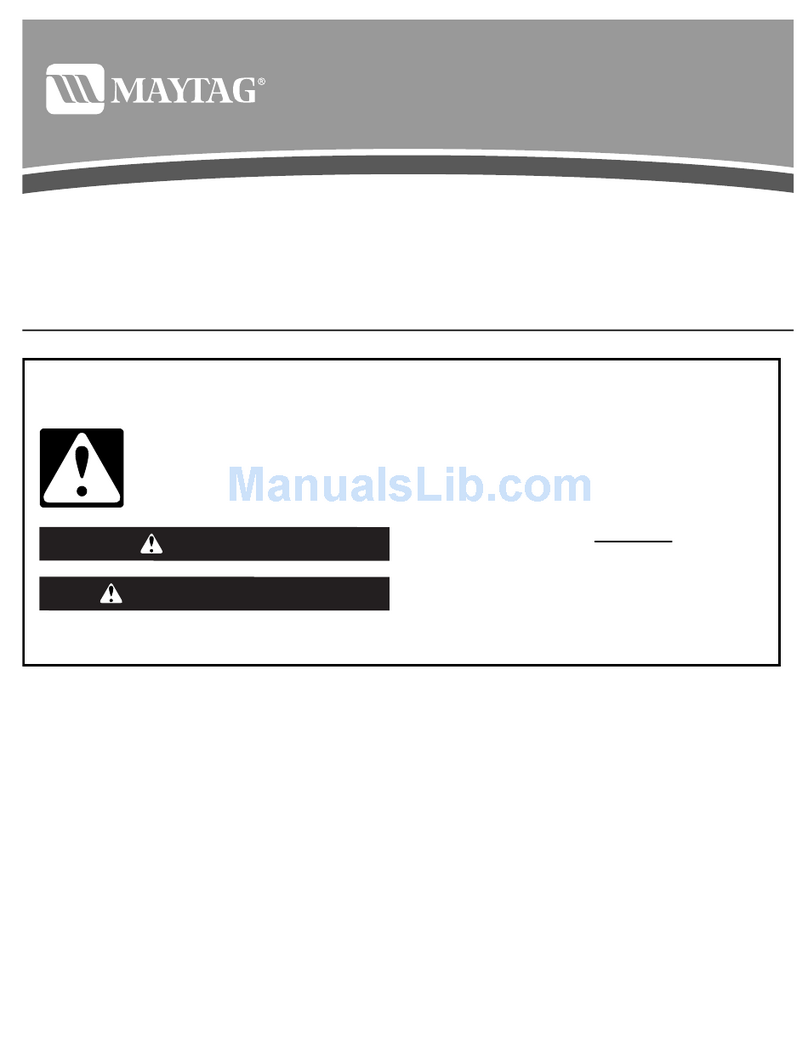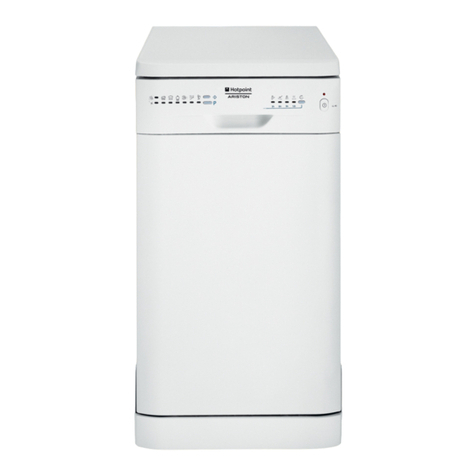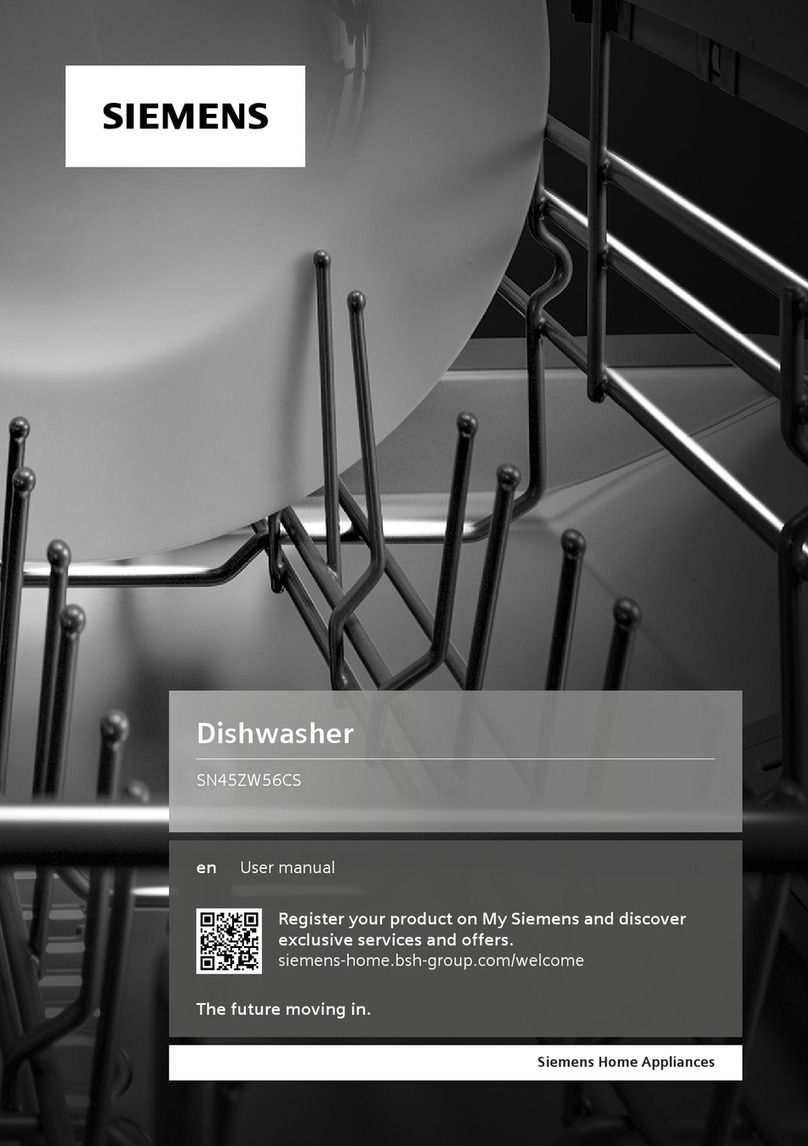
STEP2
Add Detergent
NOTE: If you do not plan to run a wash cycle soon, run a rinse
cycle. Do not use detergent.
• Use automatic dishwasher detergent only. Add powder, liquid
or tablet detergent just before starting a cycle.
• Fresh automatic A
dishwasher detergent
results in better
cleaning. Store tightly
closed detergent B...............................C
container in a cool, dry
place.
A. Cover latch
B. Main Wash section
C. Pre-Wash section
• The amount of detergent to use depends on:
How much soil remains on the items - Heavily soiled loads
require more detergent.
The hardness of the water - Ifyou use too little in hard water,
dishes won't be clean. If you use too much in soft water,
glassware will etch.
Soft to Medium Water (0-6 grains per U.S. gallon)
[typical water softener water and some city water]
Medium to Hard Water (7-12 grains per U.S. gallon)
[well water and some city water]
• Depending on your water hardness, fill the Main Wash section
of the dispenser as shown. Fill the Pre-Wash section to the
level shown, if needed.
NOTE: Fill amounts
shown are for standard
powdered detergent.
Follow instructions on the
package when using other
dishwasher detergent
types. Premeasured forms
ardWater
SoftWater
MainWash
HardWater
SoftWater
Pre-Wash
are suitable for all hardness and soil levels. Always place
premeasured detergents in the main compartment and close the
lid.
Add Rinse Aid
Your dishwasher is designed to use rinse aid for good drying
performance. Without rinse aid your dishes and dishwasher
interior will have excessive moisture. The heat dry option will
not perform as well without rinse aid.
Rinse aid keeps water from forming droplets that
can dry as spots or streaks. They also improve
drying by allowing water to drain off of the dishes
after the final rinse.
Rinse aid helps to reduce excess moisture on the
dish racks and interior of your dishwasher.
Full
Add
Check the rinse aid indicator. Add rinse aid when
indicator drops to "Add" level.
To add rinse aid, turn the dispenser cap
to "Refill" and lift off. Pour rinse aid into
the opening until the indicator level is at
"Full." Replace the dispenser cap and
turn to "Lock." Make sure cap is fully
locked.
NOTE: For most water conditions,
the factory setting of 2 will give good
results. If you have hard water or
notice rings or spots, try a higher
setting. Turn the arrow adjuster
inside the dispenser by either using
your fingers or inserting a flat-blade
screwdriver into the center of the
arrow and turning.
Lock
RefillS_
¼turn to lock
STEP3
Select a Cycle (cycles vary by model)
See "Cycle and Option Descriptions" charts in the following
section.
Efficient dishwashers run longer to save water and energy, just as
driving a car slower saves on gas. Typical cycle time is
approximately 21/2hours, but can take less or more time to
complete depending on selections.
Select Options (options vary by model)
See "Cycle and Option Descriptions" charts in the following
section.
You can customize your cycles by pressing the options desired. If
you change your mind, press the option again to turn off the option.
Not all options are available for every cycle. If an invalid option is
selected for a given cycle, the lights will flash.
STEP4
Start or Resume a Cycle
• Run hot water at the sink nearest your dishwasher until the
water is hot. Turn off water.
• Press START/RESUME once to show which
selections you used. Select the wash cycle and
options desired OR press START/RESUME to repeat ...............
the same cycle and options as in the previous wash
cycle.
IMPORTANT: If anyone opens the door (such as, for adding a dish,
even during the Delay Hours option), the Start/Resume button
must be pressed each time.
• If the Start/Resume button is located on top of door, push door
firmly closed within 3 seconds of pressing START/RESUME. If
the door is not closed within 3 seconds, the Start/Resume
button LED will flash, an audible tone will be heard, and the
cycle will not start.















